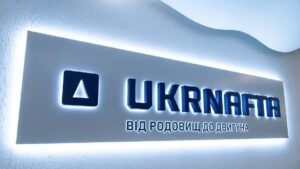
In Germany, about one million people who have been rejected for asylum remain in the country, the Epoch Times reported. In most cases, these people are living in Germany illegally, waiting for appeals to be decided or facing deportation difficulties. The country’s authorities recognize the problem and are actively seeking ways to address it, but the deportation process is hampered by political, legal and humanitarian aspects.
The denial of asylum affects several categories of migrants. Among them are:
1) economic migrants – people who are seeking better living conditions but have no grounds for asylum by international standards,
2) non-status migrants – those who have no legal basis for staying in Germany, including tourists and people with expired visas,
3) refused status reviewers – migrants whose applications have been rejected but who continue to stay in the country by filing new appeals.
4) Refused deportees – people who have been denied asylum but are evading deportation, often using legal loopholes or for humanitarian reasons.
These are mainly citizens of Afghanistan, Turkey and Kosovo who are often denied asylum because they do not meet the criteria for refugee status. These countries are seen as safe, with low levels of violence or political persecution.
Also included in the refusals are people who have not proven to belong to vulnerable categories such as refugees from violence, persecution or war.
The issue is hotly debated in German society, and the authorities are taking steps to improve migration policy, including efforts to speed up deportation processes and reform the asylum system. However, political and humanitarian considerations continue to be major obstacles to an effective resolution.

According to Eurostat data on material deprivation in the “Housing in Europe – 2025 edition” review, around 9% of the European Union population in 2024 could not afford to heat their homes adequately.
The EU’s statistical office notes that the problem of energy poverty and high utility costs remains significant for millions of households, despite the support measures taken after the 2022–2023 energy crisis.
Low-income households and residents of old, energy-inefficient housing in a number of Eastern and Southern European countries remain particularly vulnerable.

According to the Serbian Economist, Serbia has not received a special license from the U.S. OFAC to continue the work of the company NIS, which has fallen under U.S. sanctions. This was announced by Serbian President Aleksandar Vucic. He also said that Serbia has decided to completely shut down the Pančevo refinery.
Since November 25, the NIS refinery has been operating in a reduced circulation mode due to a shortage of oil. Vucic noted that NIS will decide when to complete the shutdown of the refinery.
Earlier it was reported that the Serbian parliament is preparing an amendment that would allow Serbia to become the owner of NIS. A possible sale of 56.15% of NIS shares to Hungarian partners is also being considered.
NIS, a subsidiary of Gazprom Neft, was included in the US SDN List in 2025.
https://t.me/relocationrs/1865

J&Y LLC (Zaporizhzhia), which is engaged in restoring communications in affected and de-occupied territories, invested 67.04 million in the first half of 2025 in the purchase of components for the mobile network core, according to a report by the National Commission for the Regulation of Electronic Communications and Postal Services (NCRC) on its website.
According to the regulator, in the first half of 2024, the company invested UAH 25.1 million in telecommunications, but at that time, the report did not provide additional details on how the funds would be used.
On its official website, J&Y stated that it is implementing 3G and 4G technologies to restore communications in de-occupied territories. The company announced the restoration of more than 10,000 km of networks in de-occupied territories and the provision of communications to more than 1 million people.
In addition, according to its information, more than 700 base stations have been modernized to support 4G communications, and the construction of more than 2,350 base stations is planned.
The website also states that the company is the official distributor of MikroTik/RouterBOARD products in Ukraine.
The Work.ua job portal states that the company has vacancies for an electrical communications engineer and a fiber optic cable installer in Zaporizhia, and for an occupational safety engineer, recruiter, and procurement specialist in Kyiv, with salaries ranging from 30,000 to 50,000 hryvnia. According to information from the regulator, in January-June of this year, the company employed an average of 64 people in the telecommunications sector.
According to the NCC, in the first half of this year, J& Y received UAH 2.39 million in revenue from the provision of telecommunications services, of which UAH 2.26 million came from services using communication lines with a speed of at least 2 Mbit/s, amounting to UAH 2.26 million. By the middle of the year, it had 1,200 lines (points) of fixed access to the Internet.
According to YouControl, the founders of J&Y are Alina Gorbunova with a 36% stake and Irina Srebrodolska and Valery Edelev with 32% stakes each. At the end of last year, the company’s unfinished capital investments amounted to UAH 237.8 million, while net income from the sale of services last year amounted to UAH 5.6 million.
According to the NCC, as of the middle of the first half of this year, there were three major operators providing 3G and 4G communication services in Ukraine: Kyivstar, Vodafone Ukraine, and lifecell, with revenues of UAH 12.17 billion, UAH 9.55 billion, and UAH 4.52 billion, respectively.
In addition, TriMob LLC reported small revenues from the provision of 3G and 4G services – UAH 4 million, and Laikamobile Ukraine – UAH 1.5 million, while at International Telecommunications LLC and Telesystems of Ukraine PJSC, they amounted to less than UAH 10,000.

On December 2, PJSC Ukrnafta announced a tender for insurance services covering the liability of dangerous goods transporters in the event of negative consequences during the transportation of such goods.
According to the Prozorro electronic public procurement system, the expected cost of purchasing the services is UAH 471,691 thousand.
Documents will be accepted until December 10.
Ukrnafta JSC is Ukraine’s largest oil production company and operates the largest national network of gas stations, UKRNAFTA. In 2024, the company entered into asset management with Glusco. In 2025, it completed an agreement with Shell Overseas Investments BV to purchase the Shell network in Ukraine. In total, it operates 663 gas stations.
The company is implementing a comprehensive program to restore operations and update the format of gas stations in its network. Since February 2023, it has been issuing its own fuel vouchers and NAFTAKarta cards, which are sold to legal entities and individuals through Ukrnafta-Postach LLC.
The largest shareholder of Ukrnafta is Naftogaz of Ukraine with a 50%+1 share.
In November 2022, the Supreme Commander-in-Chief of the Armed Forces of Ukraine decided to transfer the company’s corporate rights, which belonged to private owners, to the state, and they are now managed by the Ministry of Defense.

Kernel, one of Ukraine’s largest agricultural holdings, exported 1.3 million tons of grain in July-September 2026 (FY, July 2025-June 2026) exported 1.3 million tons of grain, which is 15% less than in the same period last year, but 27% more than in the previous quarter, thanks to greater availability of grain on the domestic market after the start of the winter wheat harvest.
According to the published quarterly report, wheat accounted for 74% of Kernel’s total exports, with the rest being corn and barley.
“The start of the new financial year for the Infrastructure and Trade segment was shaped by two key market dynamics: a delay in the harvesting campaign in Ukraine caused by weather conditions and slower-than-usual sales by farmers,” the agricultural holding said.
As a result, the cargo turnover of export terminals in the first quarter of FY 2026 amounted to 1.8 million tons, which is 17% less than in the same period last year, leading to a decrease in grain exports and the group’s overall sales portfolio of vegetable oils and meal.
Grain accounted for 75% of the total cargo turnover, edible oils for 13%, and vegetable meal for the rest.
The volume of grain received by silos in July-September 2026 FR amounted to 1.2 million tons, which is 34% less than in the previous year. Of this amount, 796 thousand tons were received from the agricultural holding’s own agricultural enterprises, and the rest from third-party suppliers.
“The decrease in arrivals mainly reflects the later start of the group’s harvesting campaign, as unfavorable weather conditions and uneven ripeness of crops in different regions delayed and reduced deliveries to warehouses,” Kernel explained.
The Infrastructure and Trade segment generated EBITDA of $20 million in the first quarter of 2026 FY, down 62% from the previous year.
Before the war, Kernel was the world’s leading producer of sunflower oil (about 7% of global production) and its exporter (about 12%). It is one of the largest producers and sellers of bottled oil in Ukraine. In addition, it is engaged in the cultivation and sale of agricultural products.